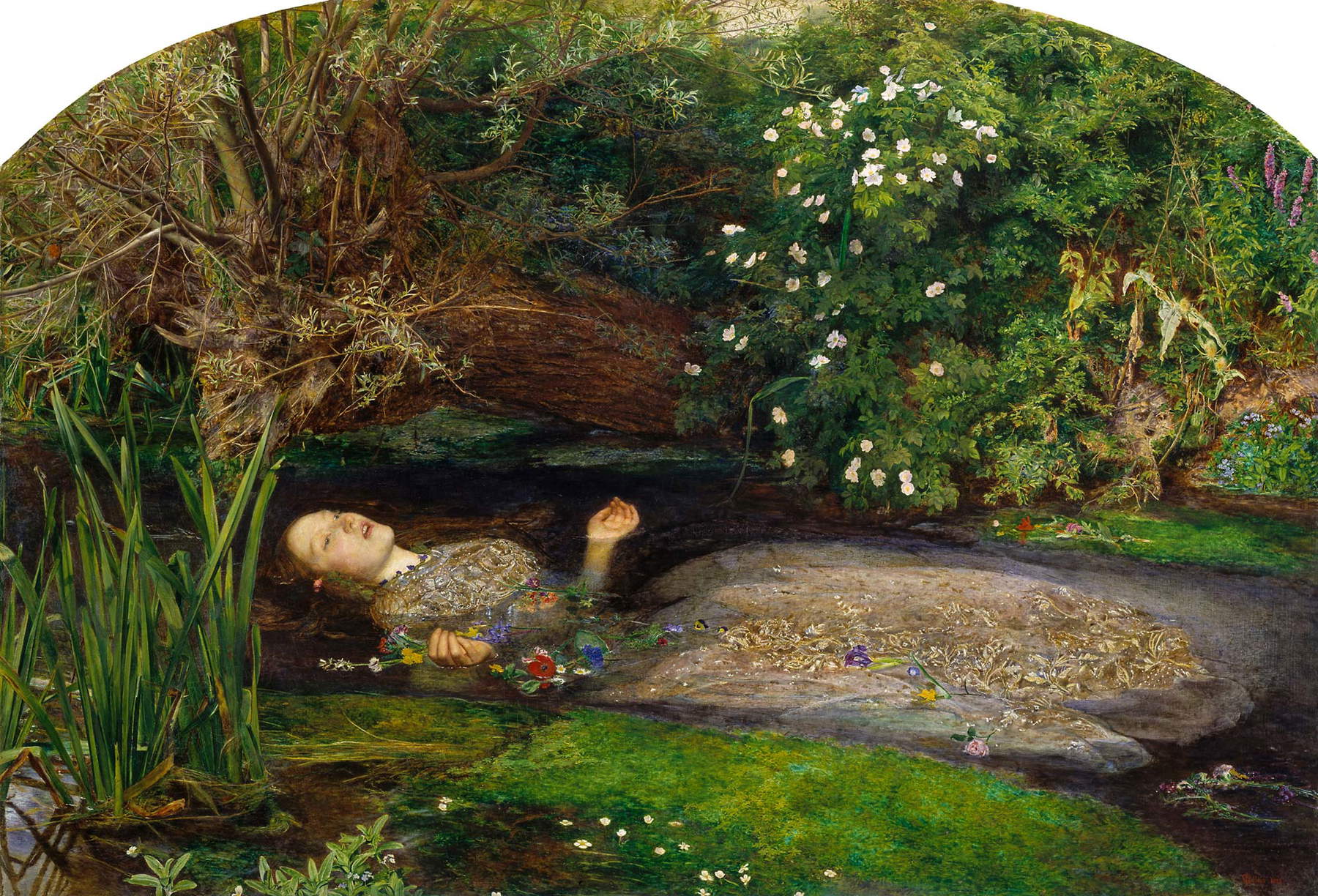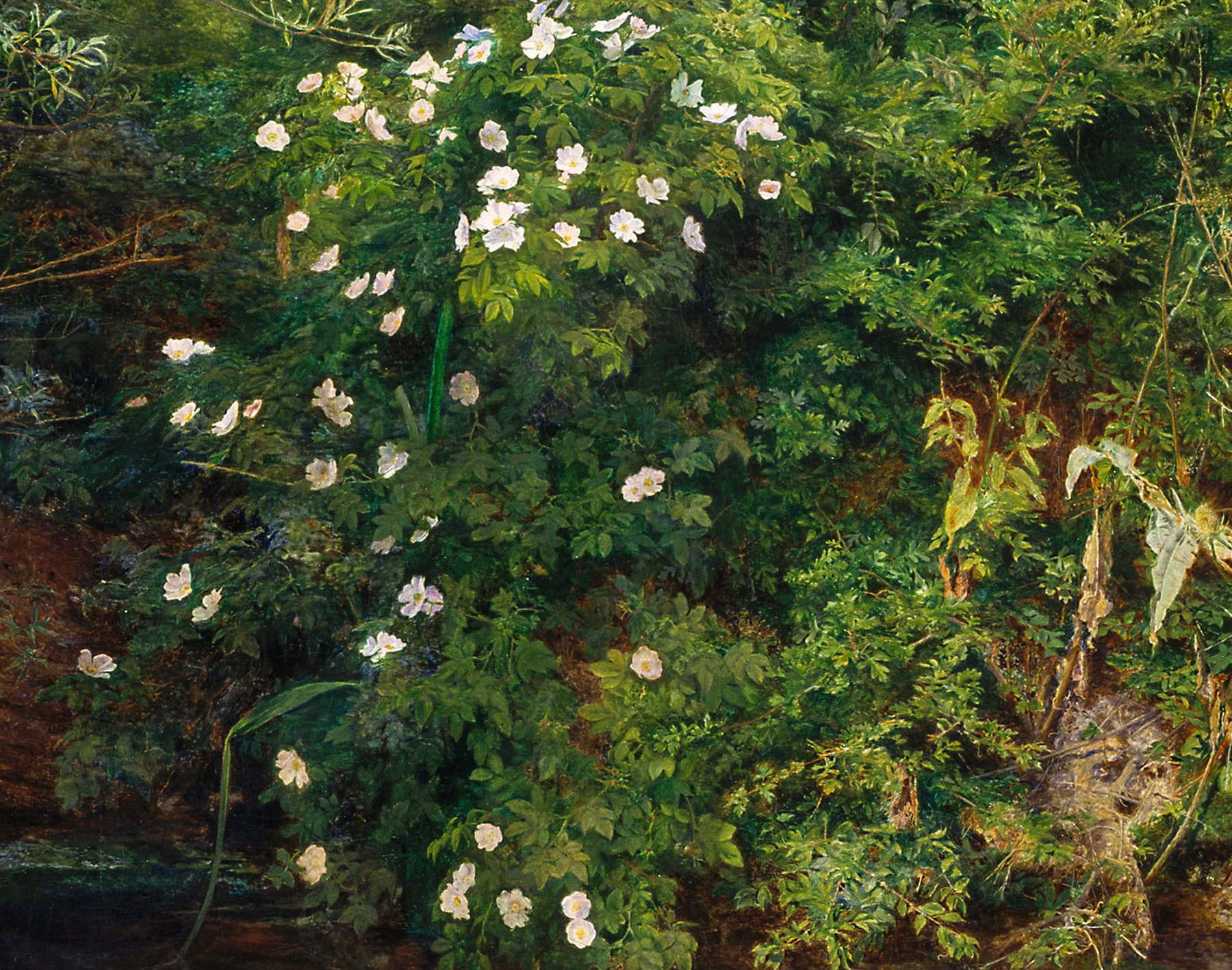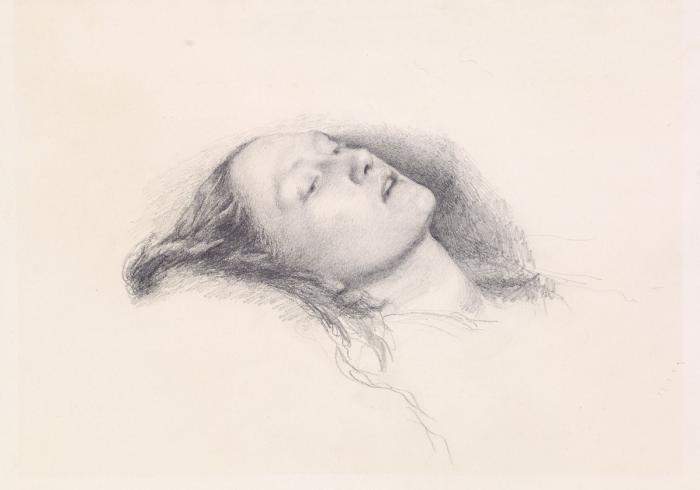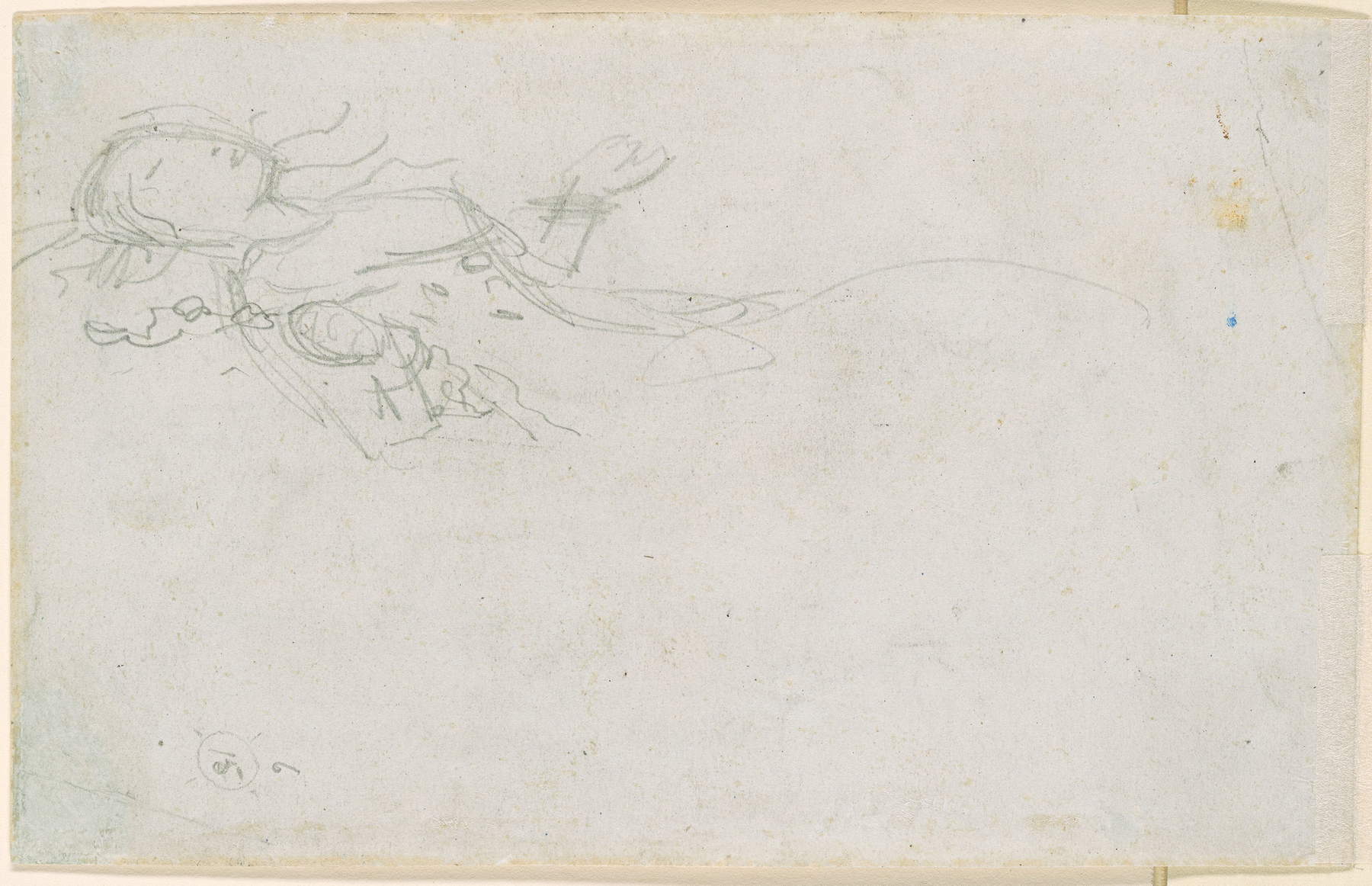Among the Pre-Raphaelite masterpieces, theOphelia by John Everett Millais (Southampton, 1829 - London, 1896) in Tate Britain is in this writer’s opinion the most disturbing, for it depicts a beautiful young maiden, elegantly attired, drowning in the waters of a stream, and to render the scene with greater verisimilitude the painter had the model in the same pose immersed in a bathtub. What could have led this young girl to take her own life? And whom does she depict? The title of the work itself reveals it: she is Ophelia, one of the protagonists of the Hamlet tragedy written by William Shakespeare between 1600 and 1602. Daughter of the chamberlain at the court of Elsinore, Polonius, and sister of Laertes, Ophelia is Hamlet’s mistress, but Hamlet comes to disavow his feelings for her as a result of various events that follow one after another: the harsh discovery of the murder of the ruler of Denmark, her father, at the hands of her uncle Claudius and brother of the deceased, the sudden marriage between Queen Gertrude and the murderer, and furthermore the same “betrayal” by Ophelia, urged on by Polonius, carried out towards Hamlet in order to prove the prince’s madness, madness believed by Polonius to be love for his daughter. Hamlet then in order to make sure that the maiden is not involved in these deceptions, tells her to her face that he never loved her. It then happens that the prince accidentally kills Polonius, who had been hiding to overhear a conversation between Hamlet and his mother Gertrude. Destroyed and out of her mind by the loss of her father and Hamlet’s abandonment, Ophelia makes her last appearance by distributing herbs and flowers under the gaze of the court and her brother Laertes and singing a song of sorrow in memory of her late father.
We learn ofOphelia’s drowning, which occurred by misfortune and not deliberately (it is permissible, however, for readers to doubt this), from Gertrude’s account to Laertes of her sister’s death (hereafter in Carlo Rusconi’s historical translation): “On the banks of the nearby little river stands a willow tree, reflecting its pale leaves in the crystal of the wave. She had gone there, carrying with her fantastic garlands of buttercups, nettles, daisies, and those long flowers that our damsels call extinct fingers. The moment she tried to hang her wild crown on the bent fronds, the envious branch on which she rested her foot broke, and all her trophies of verdure fell with her in the wave. Her garments opening around her sustained her for some time on the waters like a mermaid; and then she began to sing snatches of ancient songs, as if she had not known the danger she was in, or as if she had been born in that’element, but the thing could not much last; in short her garments drenched by the drinking wave interrupted the melodious song, and dragged the unhappy woman to the bottom of the waters, where she expired.” This is how Shakespeare describes the death of the maiden.

 John Everett
John Everett John Everett
John Everett John Everett Millais,
John Everett Millais, John Everett Millais,
John Everett Millais,
John Everett Millais, among the founders of thePre-Raphaelite movement (so named because it was inspired byItalian art before Raphael), depicted in the Tate’s famous painting the moment when Ophelia has already “fallen” into the water and lies lifelessly floating sprawled in the riverbed. The pale complexion, the open eyes and mouth, the long loose hair floating around the delicate face, the water-soaked dress, the outstretched arms: everything suggests a tragedy now accomplished. Cut flowers, of various kinds and colors, also float between her hands and on her long ornate dress. The river flows among lush vegetation: a true glimpse of nature that catches the eye of the viewer, who inevitably tries to recognize the species depicted. As stated, the Pre-Raphaelite movement, which originated in England in the mid-nineteenth century, had as its model the art prior to Raphael, since the Urbino painter had, according to the Pre-Raphaelites, distorted the principles of simplicity (too much virtuosity and pomposity) and truth (lack of adherence to the truth of nature). The movement therefore aimed on the one hand to return to primitivism andmedieval art, and on the other hand to represent reality and nature exactly as they were. And favorite writers included Shakespeare himself. In line with these principles, Millais therefore found inspiration in the famous playwright from Stratford-upon-Avon, known for his tragic love stories (among the favorite themes of the Pre-Raphaelites), and then added to it the representation of nature from life, to paint the leaves, flowers, and grass as they were.
The work dates from 1851-1852: in fact, the artist began to paint the natural landscape in July 1851, in Ewell, near the Hogsmill River in Surrey: he moved there for a good five months, in order to observe as closely as possible the vegetation in that area, bathed by muddy water. Noticeable in the painting are single flowers, plants in full bloom, broken leaves: elements that testify to Millais’s great attention to detail. However, the plant species depicted also have symbolic meanings: the roses probably allude to what her brother Laertes called Ophelia, or “May rose”; the willow, nettle and daisy allude to abandoned love, pain and innocence; the pansies to vain love. And again, the violets that Ophelia wears by way of a necklace around her neck allude to fidelity or death at a young age; the poppy refers to death, the fritillary to sorrow; forget-me-nots also float on water.




Millais instead painted the figure of Ophelia in his Gower Street studio in London. He modeled the poet and painter Elizabeth Siddal (London, 1829 - 1862), who began posing for the Pre-Raphaelite Brotherhood since the painter Walter Deverell met her in a hat store where she worked. She later became the wife of Dante Gabriel Rossetti, another of the movement’s founders, in 1860. To render as truthfully as possible the drowned maiden, he had Elizabeth pose for hours over a period of four months in a tub filled with water, heated by oil lamps below. Once the lamps went out and the painter was so focused on his work that he did not notice and made her sick from the cold; in need of treatment, the girl’s father then made Millais himself pay the medical bills, even threatening him with legal action. The matter was resolved, however, and the young girl recovered without consequence. The painter wanted to carefully observe the effect of the hair in the water and the dress adhering to her body when wet. For this painting, Millais bought from a junk dealer for four pounds a splendid wedding dress embroidered with the finest silver, to be worn by Elizabeth during the hours of posing. He wrote the painter to his friend the British printer and patron Thomas Combe in March 1852: “Today I bought a really splendid old lady’s dress-all blooming with silver embroidery-and I am going to paint it for ’Ophelia.’ It cost me four pounds old and dirty as it is.”
For this Pre-Raphaelite masterpiece, Millais made a number of preparatory sketches of the figure of Ophelia: both studies for the head and for the full figure, which are now in the Birmingham Museum, the Pierpont Morgan Library in New York and Plymouth.
Millais sold the painting to art dealer Henry Farrer and, after several successive buyers, Sir Henry Tate, a lover of works from the Victorian period, became its owner in 1892. The latter, who is credited with the existence of the Tate Gallery, presented his collection as a gift to the nation in 1894. Ophelia is thus part of that original nucleus of works that Sir Tate donated and went on to form the museum, which was opened by King Edward VII in 1897. Even today Millais’Ophelia is one of Tate Britain ’s most iconic works and continues to fascinate the thousands of visitors who come from all over the world to admire it among the London museum’s prestigious permanent collection.
Warning: the translation into English of the original Italian article was created using automatic tools. We undertake to review all articles, but we do not guarantee the total absence of inaccuracies in the translation due to the program. You can find the original by clicking on the ITA button. If you find any mistake,please contact us.